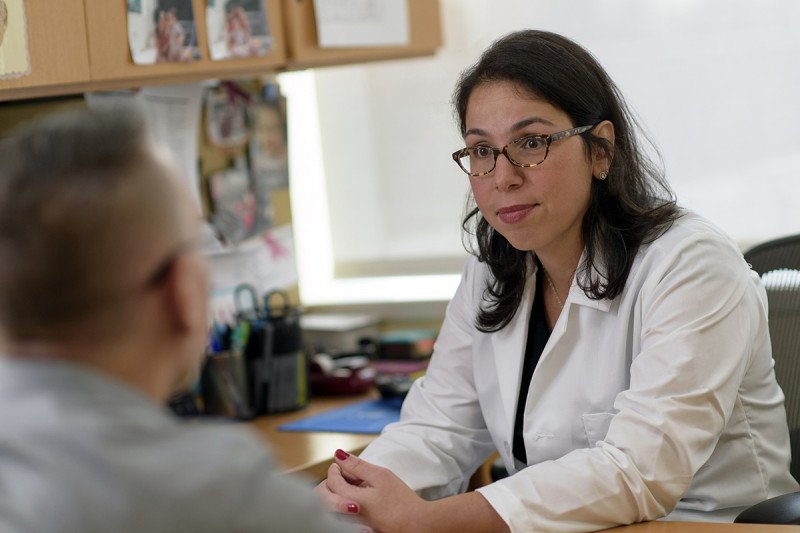
Medical oncologist Ayca Gucalp is an expert in treating breast cancer in men.
Breast cancer affects men as well as women, but it is about 100 times less common in men. The lifetime risk of a man developing breast cancer is 1 in 1,000, and the incidence has remained stable over the last 30 years. About 2,000 new cases of breast cancer are diagnosed in men every year in the United States. Men who develop breast cancer often do so later in life, around the ages of 65 to 70.
A man’s chance of surviving breast cancer is similar to that of a woman diagnosed at the same stage of disease. Male breast cancer is more likely to be cured if it is discovered early. But because many men do not realize that they can develop the disease, they don’t seek medical attention when they first discover a mass or lump in their chest. Therefore, breast cancer is generally diagnosed at later stages in men than in women.
Male and female breast cancers have many features in common, but they also differ in some aspects. Researchers are still learning about the differences in the disease between men and women.
Because the male form of the disease is so rare, conducting clinical research is a challenge. However, much of the research done in women with breast cancer has led to advances in the treatment of male breast cancer.
The Female and Male Breast
Early in life, boys and girls have a similar amount of breast tissue. Female hormones present during puberty (estrogen) cause a girl’s breasts to change. The breasts develop glands that produce milk (lobules), ducts that carry milk, and supporting fatty tissue. As a boy enters puberty, he isn’t exposed to these growth-inducing hormones, but rather male hormones that restrict his breasts from developing.
Lymph Nodes
Lymph nodes are small, bean-shaped organs that contain different types of cells, including immune cells, which help the body fight infections and cancer. When breast cancer spreads, it usually reaches the lymph nodes under the arm first. These are called axillary lymph nodes.
Lymphatic vessels, which are fine tubes that are similar to blood vessels, carry lymph through the breast to the lymph nodes. Lymph is a clear fluid containing immune cells. By traveling in the lymph, cancer cells that have detached from a breast tumor can reach the axillary lymph nodes.
The status of axillary lymph nodes is an important factor when diagnosing male breast cancer. Doctors run tests to see if a patient’s cancer has reached these lymph nodes. They use this information to estimate the risk that the cancer has or is about to spread to other parts of the body, such as the bones or lungs, and recommend an appropriate treatment plan.





